Our top picks for energy efficient LED lightbulbs that you won’t have to change for 20 years.
Table of Contents
If you’re under the age of twenty-five, there’s a chance you’ve never had to change a lightbulb. Why? Because super long-lasting, energy-efficient LED lights have been around (and increasingly popular) since you were in your teens. Older folks, like me, still remember when all the lights in the house were horribly wasteful and potentially toxic.
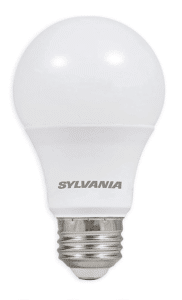
Best 60 W equivalent
Sylvania 8.5 Watt 60W Equivalent A19 Soft White Dimmable LED
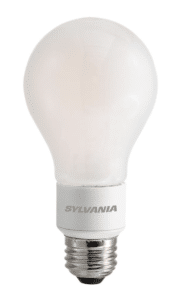
Best 100 W equivalent

Best chandelier/globe bulbs
When I was a child, all our lightbulbs were incandescent and wasted huge amounts of energy by giving off heat (which also made them dangerously hot to the touch). My energy conscious parents started making the switch to compact fluorescent bulbs (CFLs) in the late eighties and early nineties as CFLs became cheaper and more popular. CFLs are far more energy efficient than incandescent bulbs, using about 75% less energy, which also helps cut your electrical bill.
CFLs are slow to reach full brightness, however, and they give off a harsher light. Most troubling of all, CFLs work by using mercury, a toxic heavy metal, to fluoresce a phosphor coating on the inside of the bulb.
Hands up if you’ve smashed a CFL and unconsciously held your breath? Yup. Tidying up a smashed CFL is not a fun task. There are even guidelines from the US Environmental Protection Agency on how to clean up safely if a CFL breaks. Thank goodness, then, for the arrival of the affordable LED.
Free eBook: Simple Steps to a Greener Home
Concerned about climate change? Learn actionable tips for making each room in your home greener.
"*" indicates required fields
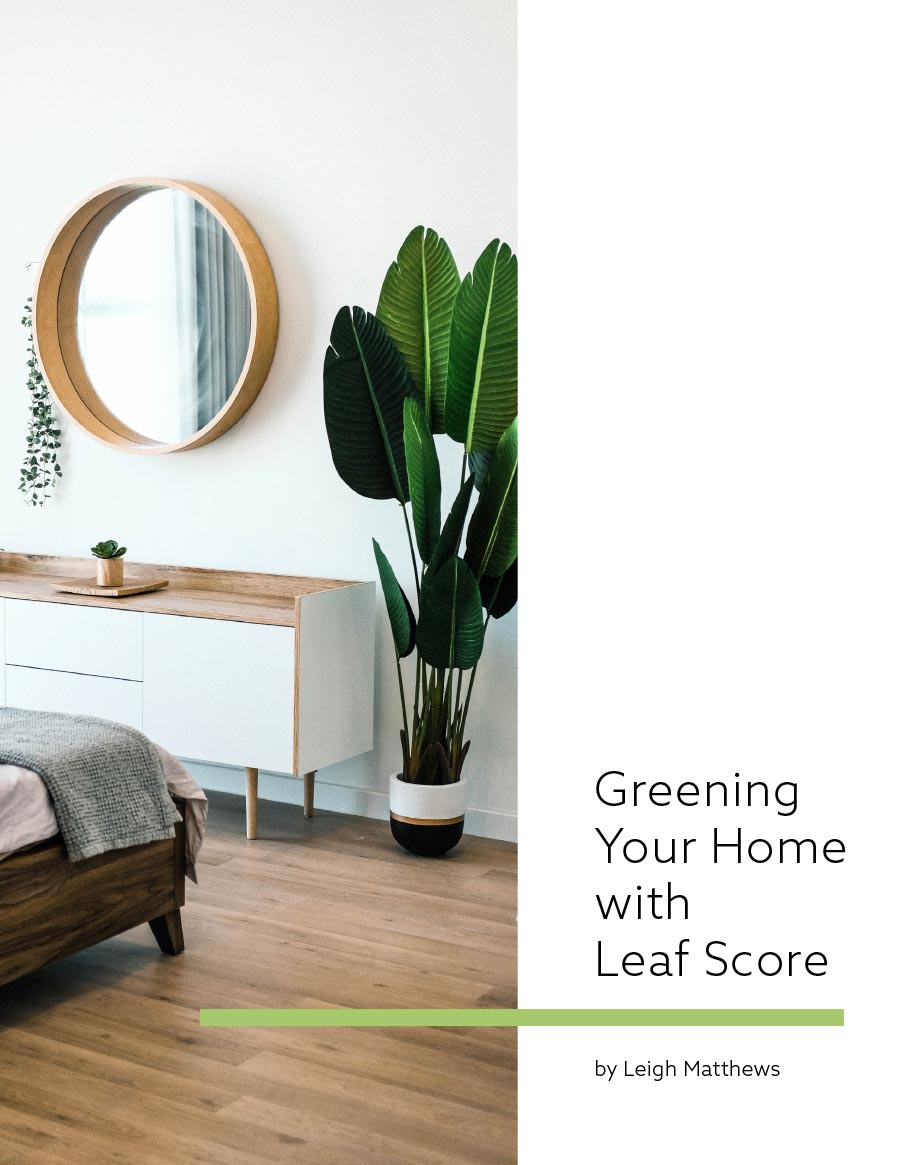
The Pros and Cons of LED Lightbulbs
- Can last 20+ years
- Smart home compatible
- No mercury
- Often emit more “cold” blue light
- Expensive
Light emitting diode (LED) lightbulbs are long-lasting, energy efficient, and smart lightbulbs. They can last twenty or more years if treated right, and most LEDs last some 20,000 to 50,000 hours, which means you won’t have to change the bulb for a generation (about 18-46 years) if you use it three hours a day.
LED lightbulbs are also basically a computer chip, meaning that they can be paired with smart home technology. Some LED lightbulbs allow you to turn lights on and off, dim the lights, change the color, and more, all through voice commands or an app.
There are also LED lightbulbs that are compatible with home security, safety, daylight, and occupancy sensors, which help save energy and keep your home safe and secure. And some LED lightbulbs work with speakers, letting you play music while lighting up the room. All this and no mercury!
But what about the cost? Sure, LEDs used to be significantly more expensive than CFLs and incandescent bulbs, sometimes up to twenty times the price. If you’ve bought a replacement bulb recently, though, you’ll have noticed a major drop in price. According to one study, “LED A lamps declined in price by 32% per year between 2011 and 2015.” In fact, prices have dropped so much that LEDs are by far your best bet for cost-efficiency as they’ll outlast and outperform CFLs handily.
Which means that the best energy efficient lightbulbs are LEDs, without a doubt.
Now we’ve got that out of the way, which LEDs are the best? In short, that depends on what you want the bulb for and where you’re going to use it.
Free eBook: Simple Steps to a Greener Home
Concerned about climate change? Learn actionable tips for making each room in your home greener.
"*" indicates required fields

How to Choose the Best LED Bulbs
LED bulbs range in warmth from cool blue-white light to a sunny yellow light. They can also be used to create ultraviolet light and a variety of colors, in case you want rainbow colored under-counter lights, for instance. Some LEDs are dimmable, while others give off a constant illumination.
LED A bulbs have a bulbous shape and are useful for lamps and regular ceiling lights. They don’t cast light evenly, though, so are not great for larger spaces or where you want really good illumination (such as for a studio.
It’s also important to note that LEDs throw out more blue spectrum light than incandescent bulbs and CFLs. Blue light is particularly bad for interfering with circadian rhythms by suppressing melatonin production. So, if you are looking for a night light or evening lamp, go for an LED with warm light instead of a clinical blue hue. Warmer light is around 2700K (with K meaning Kelvin for temperature). White light is about 3000K, while blue-white light is 5000K or more.
Learning a little light lingo can help when you’re bulb shopping. Lumens, for instance, is a measure of how bright the bulb is. For the equivalent of a 60 W incandescent, you’re looking at about 800 lumens. You might also see a CRI rating on lightbulb packaging. This stands for Color Rendering Index, which reflects the accuracy of colors under the bulb’s light. CRI ranges from 0 to 100, with a minimum of CRI 80 recommended for interior lighting, or higher if you’re doing color sensitive work in your home office.
Other features to consider include:
Motion sensor compatibility – if you’re keen on reducing energy consumption further, check to see if your preferred bulb is compatible with a motion or occupancy sensor. This can turn your lights on when you walk into a room and turn it off when you leave or if you sit still for a long time
Outdoor compatibility – some LEDs (and a handful of CFLs) can be used outdoors, though they aren’t supposed to get wet and will need protection from rain and snow
Photocell compatibility – Photocell can turn lights off during daylight hours and on again when daylight fades, but not all bulbs are compatible with photocell technology.
Best 60 W Equivalent LED Lightbulbs
60 W bulbs are your standard bulb you’ll find in the vast majority of lamps and overhead lights; while not quite as strong as some of their higher-wattage-equivalent counterparts, they do tend to be the most affordable of the bunch.

Sylvania 8.5 Watt 60W Equivalent A19 Soft White Dimmable LED
Highlights: Very affordable, super energy efficient, warm yellow lightbulb with great light distribution and brightness, and energy efficiency even when lights are turned on and off frequently.
| Compatibility | Works outdoor when not exposed to moisture Works outdoor when used base up |
| Brightness | 2700 K 800 lumens |
| Energy use and longevity | Claimed life 22.8 years 8.5 Watts |
The Sylvania 8.5 Watt LED provides consistent, bright, warm yellow light and is ideal for lamps, with an estimated 22.8 years of illumination when used for 3 hours a day. It can be used outside when protected from moisture, is compatible with a dimmer, but isn’t compatible with Photocell or other technologies and shouldn’t be used in fully enclosed fixtures.
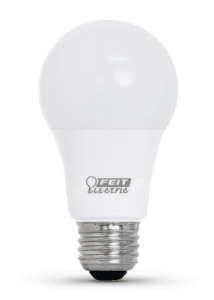
Feit Electric Led 60W Replacement Soft White, 8.8 W
Highlights: Dimmable, energy efficient LED bulb from Feit that uses just 8.8 W and offers 90+ CRI.
| Compatibility | Works with dimmer |
| Brightness | 800 lumens 90+ CRI |
| Energy use and life | 8.8 W 15,000 hours |
The Feit 60 W replacement LED uses just 8.8 Watts and offers 90+ CRI, meaning great brightness and true color. These bulbs are California Energy Commission Title 20, Title 24, JA8 compliant, offer a soft white color at 2700 K, are dimmable and can be used in enclosed indoor or damp rated fixtures.
Other Great Picks
If you’re looking for an LED replacement for a 60 W bulb, these are also a good choice:
Sylvania 12-Watt 60W A19 Soft White LED
Very affordable and energy efficient, great light distribution and brightness, and energy efficiency even when lights are turned on and off frequently.
Philips SlimStyle 60W A19 Soft White LED
Very affordable and bright, with good energy efficiency, and excellent light distribution and performance when lights are turned on and off frequently.
Philips 60W A19 Soft White with Warm Glow Dimmable LED
Another affordable, and dimmable, LED lightbulb from a trusted brand. This one is highly energy efficient, performs very well with frequent on and off of lights, and offers excellent brightness and good light distribution.
EcoSmart 60W Equivalent Soft White A19 Dimmable LED
The most affordable LED bulb in this list, the EcoSmart is highly energy efficient, offers great brightness and on-off performance, and also provides good light distribution while also being dimmable.
Free eBook: Simple Steps to a Greener Home
Concerned about climate change? Learn actionable tips for making each room in your home greener.
"*" indicates required fields

Best 100 W Equivalent LED Lightbulbs
Quite a bit pricier than their 60 W counterparts, these 100 Watt Equivalent LED Lightbulbs are still far more energy-efficient than CFLs and incandescent bulbs and will last far longer. So, if you can stomach the upfront investment, it will pay off over the years.

Sylvania Ultra-LED 100W LED20A21/DIM/0/827
Highlights: Energy efficient, bright, with great light distribution and on-off performance, the Sylvania Ultra-LED 100 W 20A21 wins the day.
| Compatibility | Dimmable |
| Brightness | 2700 K 1500 lumens |
| Energy use and life | 11 W 22.8 years |
Made in the USA with US and global parts, this classic glass shape LED bulb offers instant brightness and is 89% more efficient than incandescent bulbs. The warm 2700 K, 1500 lumens is ideal for living room or bedroom use and the bulb uses just 11 W, with a claimed lifetime of 22.8 years.
Best Flood/Reflector 65 to 90 W Equivalent Bulbs
A little pricier than regular 60 W LEDs, but less costly than a 100 W, these flood or reflector LED bulbs are a far better choice than incandescent or CFL bulbs.
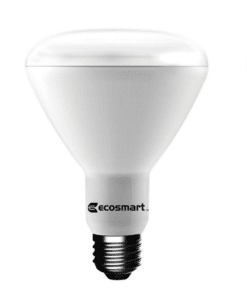
EcoSmart 75W Soft White BR30 Dimmable LED
Highlights: The most affordable flood or reflector light on this list, the EcoSmart offers 75 W equivalent brightness with a fraction of the energy outlay. Efficient, bright, and with excellent on-off performance and light distribution, this is our top pick for a flood LED.
| Compatibility | Dimmable Tracked, recessed Damp locations |
| Brightness | 2700 K 945 lumens CRI 80 |
| Energy use and life | 12.5 W 22.8 years |
Shatter resistant and offering a soft white light, this energy saving LED is ideal for indoor or covered outdoor use and offers an estimated $172 estimated lifetime energy savings per bulb. The bulb works with dimmers and is compatible with tracked and recessed lighting, using 12.5 W and lasting some 22.8 years in ideal settings.
Other Good Picks
Sylvania 12-Watt (65W) BR30 Soft White Dimmable LED
Dimmable, energy efficient, bright, and offering great on-off performance, the Sylvania 12 W (65 W equivalent) BR30 offers soft white light and is a great choice for the eco-friendly home.
Satco 12.8W R30 S9025 LED
Scoring top marks across the board, the Satco 12.8 W R30 S9025 LED is energy efficient, bright, and a great on-off performer.
Philips SlimStyle BR30
One of the most affordable flood or reflector LEDs, the Philips SlimStyle BR30 offers excellent brightness and on-off performance and is very energy efficient.
Other good options include:
Philips 13W BR30 Soft White LED 423798
EcoSmart 65W Equivalent Soft White BR30 Dimmable LED
Best Chandelier and Globe 40 to 60 W Equivalent Bulbs
Chandelier lightbulbs tend to be slimmer and less bright as they’re designed to be clustered for visual effect. Most LED chandelier bulbs range between 40 and 60 W equivalent and are a good affordable option. They’re also helpful for slimmer lamp fixtures.

EcoSmart 40W Equivalent Dimmable Soft White B11 LED
Highlights: Affordable, energy efficient (uses only 4 W!) and with good on-off performance.
| Compatibility | Dimmers |
| Brightness | 2700 K 350 lumen |
| Energy use and life | 4 W 18.2 years |
Using just 4 W, these candelabra style LED bulbs offer soft white light equivalent to a 40 W bulb. Ideal for indoor and covered outdoor use, as well as in enclosed fixtures, these bulbs offer an estimated lifetime saving of $79 in electricity cost per bulb. They are compatible with dimmers too and are very affordable with a 5-year warranty.

Feit Electric 60 Watt Replacement 9w G25 Dimmable
Highlights: Bright, energy efficient, dimmable, and using just 9 W, the Feit globe LED G25 offers excellent light distribution and on-off performance.
| Compatibility | Dimmable Enclosed Damp rated fixture |
| Brightness | 2700 K 500 lumens 90+ CRI |
| Energy use and life | 5.5 W 13.6 years |
Using up to 90% less energy compared to a standard incandescent light bulb, this soft white dimmable LED offers 90+ CRI for true color and the equivalent of a 60 W incandescent bulb. Suitable for enclosed indoor or damp rated fixtures, this globe bulb is estimated to last 13.6 years and is very energy efficient.
What about the Philip’s Dubai led 60w at only 3w and 600 lumins output?
Hi Vernon,
For that light output and energy usage, it seems like an efficient option, yes! And the brand is generally reliable too.
Thanks,
Leigh
Have you tested the Satco Led? I am wondering if they come close to being as energy efficient as any of the above mentioned bulbs.
Thanks,
Carol
At IKEA (in Sweden at least, but not in the US) we find 100 W equivalent (1521 lm) bulbs with a wattage of 9.5 (160 lm/W) and at the same time a CRI of 92 (CCT: 2700 K). This is the best efficiency/quality ratio that I have found for any matt diffuser dome lamp (filament types are at an advantage to due lower optical losses – no diffuser needed)